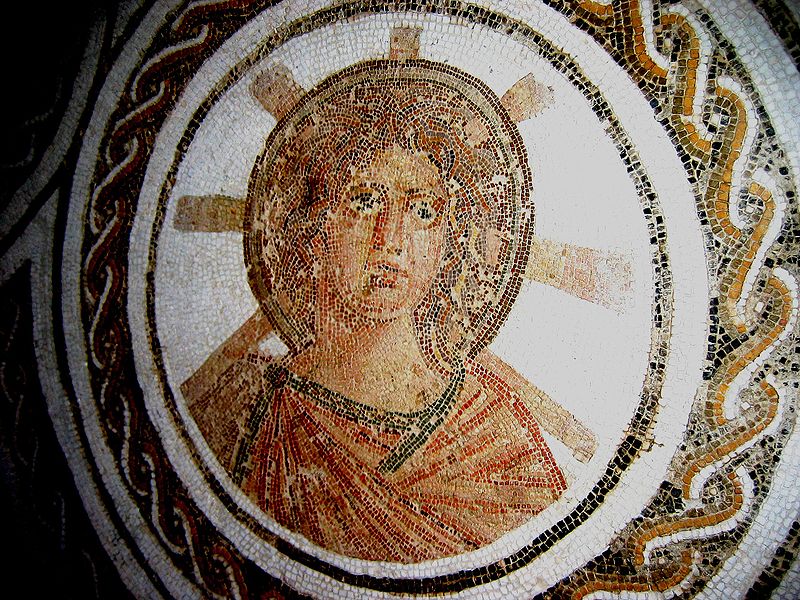Goddesses named for and representing the concept Liberty have existed in many cultures, including classical examples dating from the Roman Empire and some national symbols such as the British “Britannia” or the Irish “Kathleen Ni Houlihan”.
The ancient Roman goddess Libertas, the Roman goddess and embodiment of liberty, was honored during the second Punic War (218 to 201 BC) by a temple erected on the Aventine Hill in Rome by the father of Tiberius Gracchus.
A statue in her honor was also raised by Clodius on the site of Marcus Tullius Cicero’s house after it had been razed. The figure also resembles Sol Invictus, the Roman god of sun.
Among the Romans the cap of felt was the emblem of liberty. When a slave obtained his freedom he had his head shaved, and wore instead of his hair an undyed pileus. The figure of Liberty on some of the coins of Antoninus Pius, struck A.D. 145, holds this cap in the right hand.
The Phrygian cap is a soft conical cap with the top pulled forward, associated in antiquity with the inhabitants of Phrygia, a region of central Anatolia.
In the western provinces of the Roman Empire it came to signify freedom and the pursuit of liberty, perhaps through a confusion with the pileus, the felt cap of manumitted (emancipated) slaves of ancient Rome.
Accordingly, the Phrygian cap is sometimes called a liberty cap; in artistic representations it signifies freedom and the pursuit of liberty.
Libertas, along with other Roman goddesses, has served as the inspiration for many modern-day symbols, including the Statue of Liberty on Liberty Island in the USA.
According to the National Park Service, the Statue’s Roman robe is the main feature that invokes Libertas and the symbol of Liberty from which the Statue derives its name.
The fictional characters Columbia of the USA and Marianne of France, the Statue of Liberty in New York Harbor and many other characters and concepts of the modern age were created as, and are seen, as embodiments of Libertas.
National embodiments of Liberty include Britannia in the United Kingdom, “Liberty Enlightening the World,” commonly known as the Statue of Liberty in the USA, and Marianne in France.
In 1793, during the French Revolution, the Notre Dame de Paris cathedral was turned into a “Cult of Reason” and for a time “Lady Liberty” replaced the Virgin Mary on several altars.
Embodiments of the goddess Liberty in the United States of America include Columbia, which is yet another personification of the goddess Liberty.
Did the Statue of Liberty come from Iraq?
Image may be NSFW.
Clik here to view.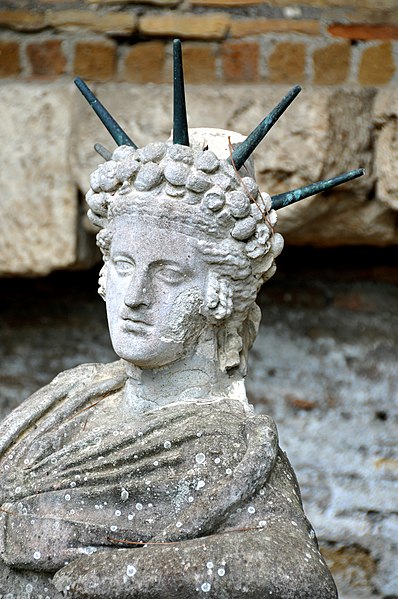
Image may be NSFW.
Clik here to view.
Statue of Attis at the Shrine of Attis situated in the Campus of the Magna Mater in Ostia Antica
Attis was the consort of Cybele in Phrygian and Greek mythology. His priests were eunuchs, the Galli, as explained by origin myths pertaining to Attis and castration. Attis was also a Phrygian god of vegetation, and in his self-mutilation, death, and resurrection he represents the fruits of the earth, which die in winter only to rise again in the spring.
An Attis cult began around 1250 BC in Dindymon (today’s Murat Dağı of Gediz, Kütahya). He was originally a local semi-deity of Phrygia, associated with the great Phrygian trading city of Pessinos, which lay under the lee of Mount Agdistis. The mountain was personified as a daemon, whom foreigners associated with the Great Mother Cybele.
Mithra
Mitanni (Mi-ta-nni) – Mitra
Image may be NSFW.
Clik here to view.
Image may be NSFW.
Clik here to view.
Image may be NSFW.
Clik here to view.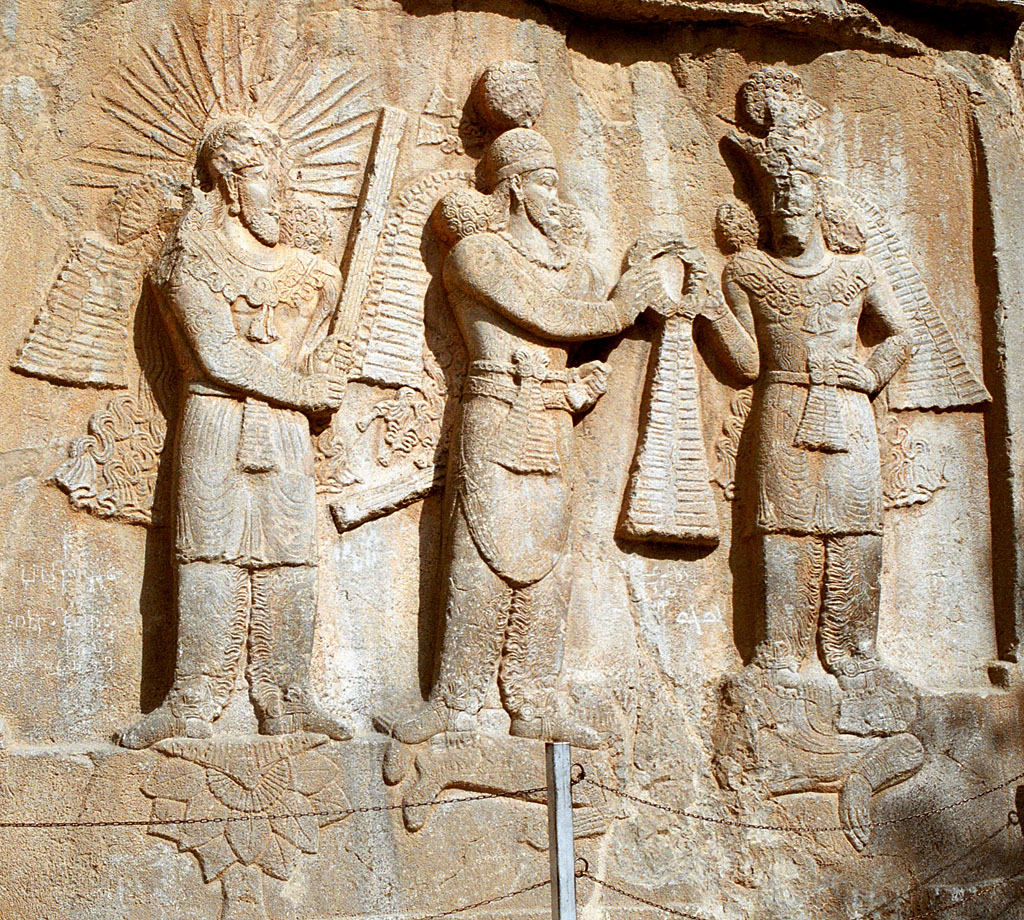
Investiture of Sassanid emperor Ardashir I or II (3rd century CE bas-relief at Taq-e Bostan, Iran. On the left stands the yazata Mithra with raised barsom, sanctifying the investiture.
Image may be NSFW.
Clik here to view.
Sixth panel of the Mithraeum at Ostia in Italy of the 6th degree of the Mithraic Mysteries, the Mystery religion of the Roman Empire, here we see a whip, a crown of seven spikes and a torch.
“Both Mithras and Christ were described variously as ‘the Way,’ ‘the Truth,’ ‘the Light,’ ‘the Life,’ ‘the Word,’ ‘the Son of God,’ ‘the Good Shepherd.’ The Christian litany to Jesus could easily be an allegorical litany to the sun-god.
Mithras is often represented as carrying a lamb on his shoulders, just as Jesus is. Midnight services were found in both religions. The virgin mother…was easily merged with the virgin mother Mary. Petra, the sacred rock of Mithraism, became Peter, the foundation of the Christian Church.”
“Mithra, or Mitra, is worshipped as Itu (Mitra-Mitu-Itu) in every house of the Hindus in India. Itu (derivative of Mitu or Mitra) is considered as the Vegetation-deity. This Mithra or Mitra (Sun-God) is believed to be a Mediator between God and man, between the Sky and the Earth.
It is said that Mithra or [the] Sun took birth in the Cave on December 25th. It is also the belief of the Christian world that Mithra or the Sun-God was born of [a] Virgin. He travelled far and wide. He has twelve satellites, which are taken as the Sun’s disciples…. [The Sun's] great festivals are observed in the Winter Solstice and the Vernal Equinox—Christmas and Easter. His symbol is the Lamb…”
Mithras is the god of a roman mystery-cult, which flourished from the 1th to 4th century of our era. Their rituals was performed in the mithraeum, either a natural cave or a building imitating one. Apart from representations of Mithras himself, other sculptures has been found.
The first extant record of Indo-Aryan Mitra, in the form mi-it-ra-, is in the inscribed peace treaty of c. 1400 BC between Hittites and the Hurrian kingdom of the Mitanni in the area southeast of Lake Van in Asia Minor. There Mitra appears together with four other Indo-Aryan divinities as witnesses and keepers of the pact. R. D. Barnett has argued that the royal seal of King Saussatar of Mitanni from c. 1450 BC. depicts a tauroctonous Mithras.
The Mitanni kingdom was referred to as the Maryannu, Nahrin or Mitanni by the Egyptians, the Hurri by the Hittites, and the Hanigalbat by the Assyrians. The different names seem to have referred to the same kingdom and were used interchangeably, according to Michael C. Astour.
Egyptian sources call Mitanni “nhrn”, which is usually pronounced as Naharin/Naharina from the Assyro-Akkadian word for “river”, cf. Aram-Naharaim.
The name Mitanni is first found in the “memoirs” of the Syrian wars (ca. 1480 BC) of the official astronomer and clockmaker Amememhet, who returned from the “foreign country called Me-ta-ni” at the time of Thutmose I.
Hittite annals mention a people called Hurri (Ḫu-ur-ri), located in northeastern Syria. A Hittite fragment, probably from the time of Mursili I, mentions a “King of the Hurri”, or “Hurrians”.
The Assyro-Akkadian version of the text renders “Hurri” as Hanigalbat. Tushratta, who styles himself “king of Mitanni” in his Akkadian Amarna letters, refers to his kingdom as Hanigalbat.
The ethnicity of the people of Mitanni is difficult to ascertain. A treatise on the training of chariot horses by Kikkuli contains a number of Indo-Aryan glosses. Kammenhuber (1968) suggested that this vocabulary was derived from the still undivided Indo-Iranian language, but Mayrhofer (1974) has shown that specifically Indo-Aryan features are present.
The names of the Mitanni aristocracy frequently are of Indo-Aryan origin, but it is specifically their deities which show Indo-Aryan roots (Mitra, Varuna, Indra, Nasatya).
Hekate
Image may be NSFW.
Clik here to view.
Image may be NSFW.
Clik here to view.
Image may be NSFW.
Clik here to view.
Hecate or Hekate was a goddess in Greek religion and mythology, most often shown holding two torches or a key and in later periods depicted in triple form. She was variously associated with crossroads, entrance-ways, fire, light, the Moon, magic, witchcraft, knowledge of herbs and poisonous plants, necromancy, and sorcery.
She had rulership over earth, sea and sky, as well as a more universal role as Saviour (Soteira), Mother of Angels and the Cosmic World Soul. She was one of the main deities worshiped in Athenian households as a protective goddess and one who bestowed prosperity and daily blessings on the family.
Hecate may have originated among the Carians of Anatolia, where variants of her name are found as names given to children. William Berg observes, “Since children are not called after spooks, it is safe to assume that Carian theophoric names involving hekat- refer to a major deity free from the dark and unsavoury ties to the underworld and to witchcraft associated with the Hecate of classical Athens.” She also closely parallels the Roman goddess Trivia, with whom she was identified in Rome.
The spikes sticking from the head are sculptural representations of Rays of Light emanating from the Head… as in the force of the power of Reason to build a better, more equitable government and society… which is what the American Revolution and Constitution represented to the French.
Taurobolium and criobolium
In the Roman Empire of the 2nd to 4th centuries, taurobolium referred to practices involving the sacrifice of a bull, which after mid-2nd century became connected with the worship of the Great Mother of the Gods; though not previously limited to her cultus, after 159 CE all private taurobolia inscriptions mention Magna Mater. Originating in Asia Minor, its earliest attested performance in Italy occurred in 134 CE, at Puteoli, in honor of Venus Caelestis, documented by an inscription.
The earliest inscriptions, of the 2nd century in Asia Minor, point to a bull chase in which the animal was overcome, linked with a panegyris in honour of a deity or deities, but not an essentially religious ceremony, though a bull was sacrificed and its flesh distributed.
Criobolium is the ritual sacrifice of a ram in the cult of Attis and the Great Mother of the Gods. It seems to have been a special ceremony instituted after the rise, and on the analogy of the taurobolium, which was performed in honor of the Great Mother, for the purpose of giving fuller recognition to Attis in the duality which he formed with the Mother. There is no evidence of its existence either in Asia or in Italy before the taurobolium came into prominence (after AD 134).
When the criobolium was performed in conjunction with the taurobolium, the altar was almost invariably inscribed to both the Mother and Attis, while the inscription was to the Mother alone when the taurobolium only was performed. The celebration of the criobolium was widespread, and its importance such that it was sometimes performed in place of the taurobolium (Corp. Inscr. Lat. vi. 505, 506). The details and effect of the ceremony were no doubt similar to those of the taurobolium.
Helios and Solar Apollo
Image may be NSFW.
Clik here to view.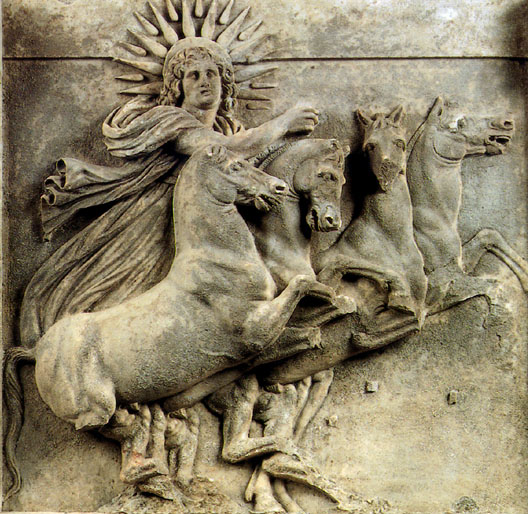
Helios in his chariot, early 4th century BC, Athena’s temple, Ilion.
Image may be NSFW.
Clik here to view.
Solar Apollo with the radiant halo of Helios in a Roman floor mosaic, El Djem, Tunisia, late 2nd century.
Image may be NSFW.
Clik here to view.
Dedication made by a priest of Jupiter Dolichenus on behalf of the wellbeing (salus) of the emperors, to Sol Invictus and the Genius of the miitary unit equites singulares.
Image may be NSFW.
Clik here to view.
Roman Imperial repoussé silver disc of Sol Invictus (3rd century), found at Pessinus.
Helios was the personification of the Sun in Greek mythology. Homer often calls him Titan or Hyperion, while Hesiod (Theogony 371) and the Homeric Hymn separate him as a son of the Titans Hyperion and Theia (Hesiod) or Euryphaessa (Homeric Hymn) and brother of the goddesses Selene, the moon, and Eos, the dawn. Ovid also calls him Titan.
Helios was described as a handsome god crowned with the shining aureole of the Sun, who drove the chariot of the sun across the sky each day to earth-circling Oceanus and through the world-ocean returned to the East at night. In the Homeric hymn to Helios Helios is said to drive a golden chariot drawn by steeds (HH 31.14-15); and Pindar speaks of Helios’s “fire-darting steeds” (Olympian Ode 7.71). Still later, the horses were given fiery names: Pyrois, Aeos, Aethon, and Phlegon.
As time passed, Helios was increasingly identified with the god of light, Apollo. However, in spite of their syncretism, they were also often viewed as two distinct gods (Helios was a Titan, whereas Apollo was an Olympian). The equivalent of Helios in Roman mythology was Sol, specifically Sol Invictus (“Unconquered Sun”), the official sun god of the later Roman Empire and a patron of soldiers.
In 274 the Roman emperor Aurelian made it an official cult alongside the traditional Roman cults. Sol Invictus played a prominent role in the Mithraic mysteries, and was equated with Mithras himself.
The Colossus of Rhodes
Image may be NSFW.
Clik here to view.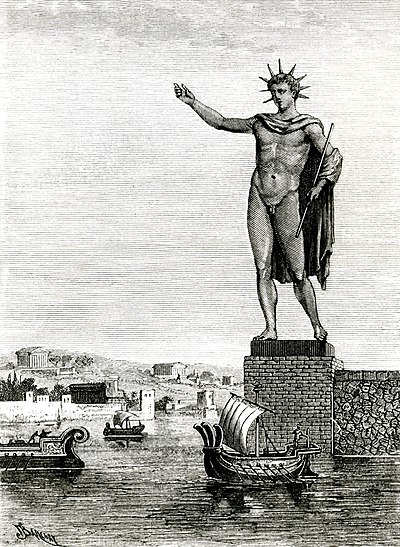
Image may be NSFW.
Clik here to view.
The Colossus of Rhodes was a statue of the Greek Titan Helios. The statue was erected in the city of Rhodes, on the Greek island of the same name, by Chares of Lindos in 280 BC. It is considered one of the Seven Wonders of the Ancient World. It was constructed to celebrate Rhodes’ victory over the ruler of Cyprus, Antigonus I Monophthalmus, whose son unsuccessfully besieged Rhodes in 305 BC.
The statue stood for 56 years until Rhodes was hit by the 226 BC Rhodes earthquake, when significant damage was also done to large portions of the city, including the harbour and commercial buildings, which were destroyed. The statue snapped at the knees and fell over on to the land. Ptolemy III offered to pay for the reconstruction of the statue, but the oracle of Delphi made the Rhodians afraid that they had offended Helios, and they declined to rebuild it.
Before its destruction in the earthquake of 226 BC, the Colossus of Rhodes stood over 30 meters (98 feet) high, making it one of the tallest statues of the ancient world.
Christus
Image may be NSFW.
Clik here to view.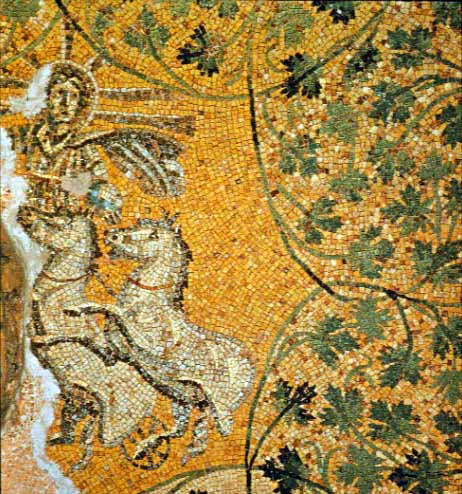
Mosaic of Christ as Sol or Apollo-Helios in Mausoleum M in the pre-4th-century necropolis beneath[35] St. Peter’s in the Vatican, which many interpret as representing Christ.
Image may be NSFW.
Clik here to view.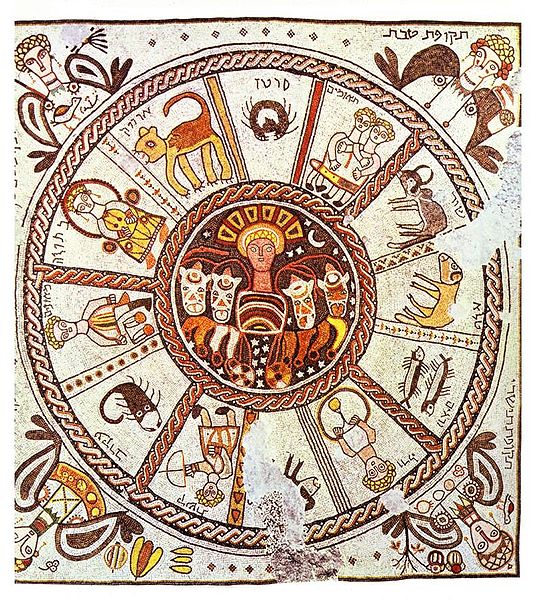
Mosaic in the Beth Alpha synagogue, with the sun in the centre, surrounded by the twelve zodiac constellations and with the four seasons associated inaccurately with the constellations.
Statue of Liberty
There is a famous reference to the Colossus in the sonnet “The New Colossus” by American poet Emma Lazarus (1849–87), written in 1883 and inscribed on a plaque located inside the pedestal of the Statue of Liberty:
Not like the brazen giant of Greek fame,
With conquering limbs astride from land to land;
Here at our sea-washed, sunset gates shall stand
A mighty woman with a torch, whose flame
Is the imprisoned lightning, and her name
Mother of Exiles. From her beacon-hand
Glows world-wide welcome; her mild eyes command
The air-bridged harbour that twin cities frame.
“Keep, ancient lands, your storied pomp!” cries she
With silent lips. “Give me your tired, your poor,
Your huddled masses yearning to breathe free,
The wretched refuse of your teeming shore.
Send these, the homeless, tempest-tost to me,
I lift my lamp beside the golden door!”
Image may be NSFW.
Clik here to view.
The poem was written as a donation to an auction of art and literary works conducted by the “Art Loan Fund Exhibition in Aid of the Bartholdi Pedestal Fund for the Statue of Liberty” to raise money for the pedestal’s construction. In 1903, the poem was engraved on a bronze plaque and mounted inside the lower level of the pedestal of the Statue of Liberty.
Lazarus’s contribution was solicited by fundraiser William Maxwell Evarts. Initially she refused but Constance Cary Harrison convinced her that the statue would be of great significance to immigrants sailing into the harbor.
Filed under: Uncategorized Image may be NSFW.
Clik here to view.
Clik here to view.

